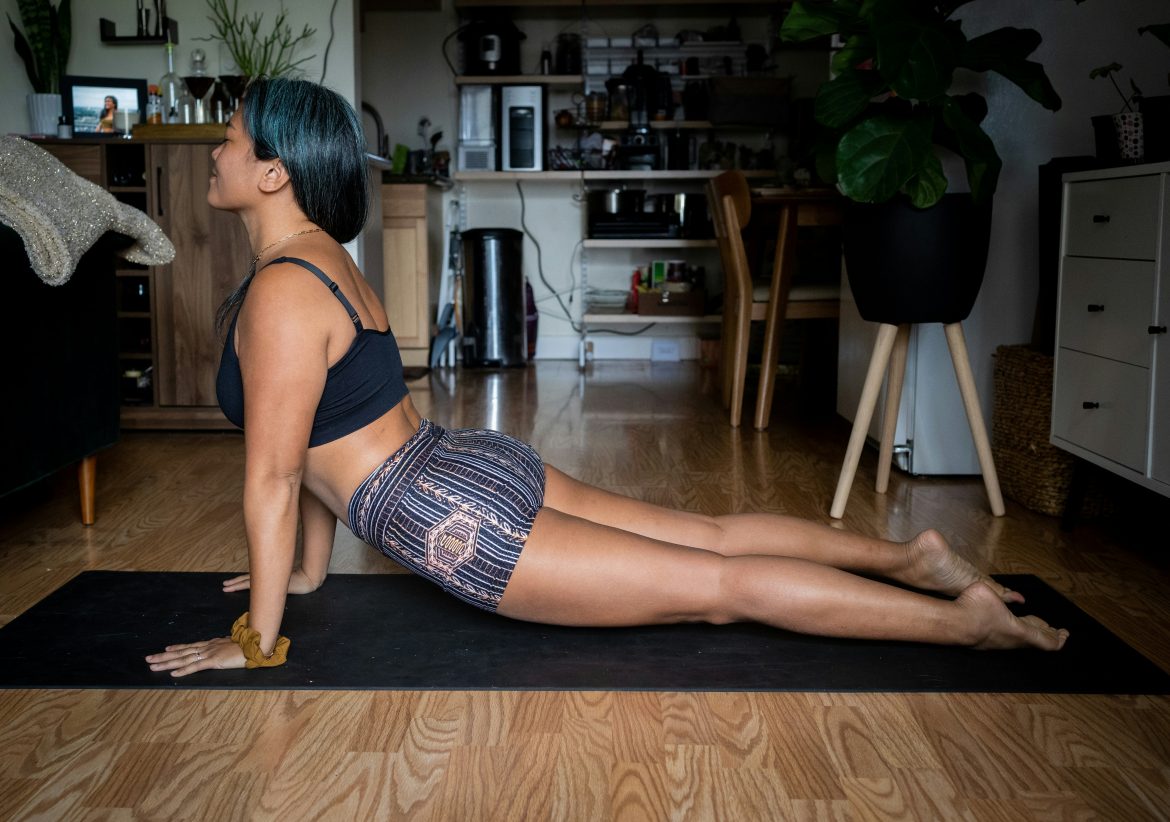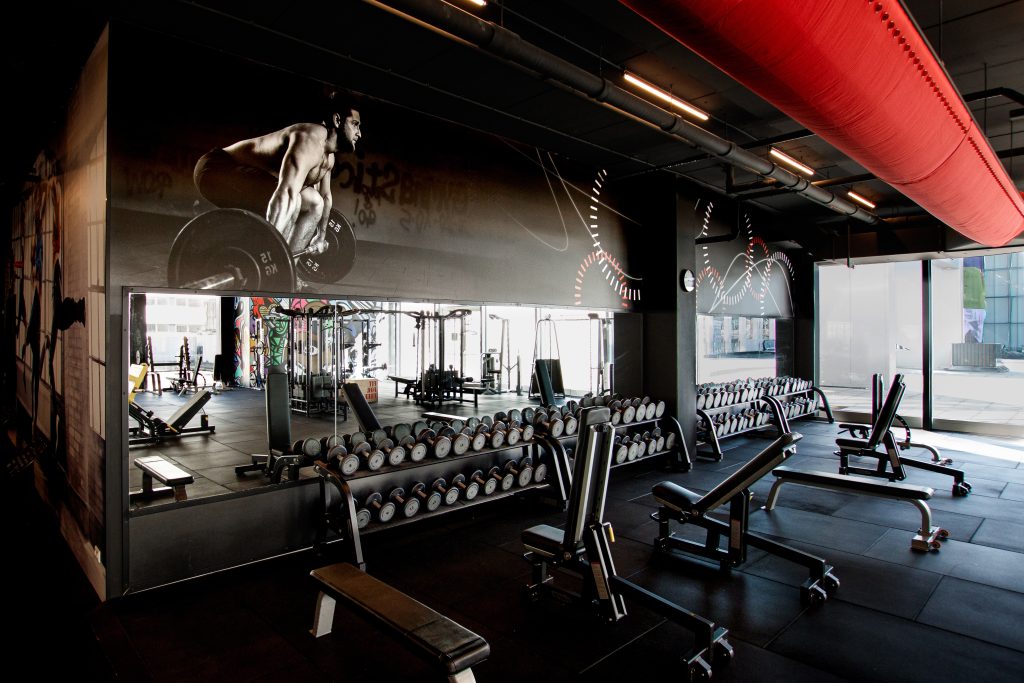Evening workouts are becoming a popular choice for individuals seeking to fit fitness into their busy schedules. The concept of Evening Fitness for Beginners caters to those who find the night hours more convenient or peaceful for exercise. The benefits of working out at night are supported by research, indicating potential advantages in performance, convenience, and adherence to a fitness regimen.
The tranquility of the evening can offer a more focused and less crowded environment for exercise, making it an appealing time for beginners to start their fitness journey. Despite the calm atmosphere, evening workouts require the same dedication and structure as any fitness routine. Aligning a workout plan with one’s nightly routine demands careful planning and consideration of the body’s natural rhythms.
“Studies have shown that engaging in physical activity during the evening can lead to improved sleep quality and mood the next day.
The science of our body’s internal clock, or circadian rhythms, supports the idea that exercising in the evening can be in harmony with our natural energy patterns. This guide aims to provide practical tips and detailed insights into making the most of your evening workouts, ensuring that your fitness goals are met effectively and safely.
Embracing Evening Workouts: A Starter Guide: Explore the benefits and learn how to overcome common challenges associated with evening workouts.
Designing Your Night Fitness Plan: Discover how to create a structured and consistent workout routine that complements your nightly commitments.
Optimal Workouts for Evening Fitness: Understand which exercises are most effective during the evening and how to align them with your body’s energy levels.
Nutrition & Hydration After Dark: Learn about the importance of proper nutrition and hydration specifically for evening workouts, including meal timing and composition.
Navigating Challenges & Safety at Night: Gain insights into ensuring personal safety during outdoor evening workouts, adjusting your routine according to seasonal changes, and managing energy levels effectively.
Embracing Evening Workouts: A Starter Guide
Evening workouts are increasingly recognized for their potential health benefits and alignment with many people’s lifestyles. This section, ‘Embracing Evening Workouts: A Starter Guide,’ provides beginners with essential information about the advantages of exercising at night, how to tackle common challenges, and strategies for effective goal setting.
Introduction to Evening Workouts
Engaging in physical activities in the evening can offer several physiological benefits. Studies indicate that the body’s temperature peaks in the late afternoon to early evening, potentially enhancing performance, muscle strength, and endurance during workouts. This period is optimal for physical activities, as the body is fully awake, and muscles are warm and flexible. Beginners can leverage these physiological benefits to potentially achieve faster progress and a more satisfying workout experience.
Incorporating exercise into the evening routine requires an understanding of these benefits and a commitment to integrate this practice into daily life effectively. It’s advisable for beginners to start with lighter exercises and progressively incorporate more intensive workouts, ensuring a smooth transition and a sustainable approach to fitness.
Overcoming Challenges
Engaging in evening workouts can come with its own set of challenges, such as post-workday fatigue, time management issues, and maintaining consistency in the routine. Recognizing and addressing these challenges is crucial for a successful fitness journey.
To effectively overcome common challenges associated with evening workouts, consider the following practical steps:
- Energy Management: Adjust your diet and hydration throughout the day to ensure you have enough energy for your evening workout.
- Time Management: Plan your workouts in advance, setting aside dedicated time slots to maintain consistency.
- Environment Optimization: Create a workout-friendly environment at home, or choose a gym that’s welcoming and conveniently located to minimize barriers to regular exercise.
Managing energy levels is crucial. Ensuring proper nutrition and hydration throughout the day can help maintain energy levels for evening activities. Scheduling workouts and sticking to the plan can aid in developing consistency. Additionally, creating a conducive workout environment, whether at home or selecting a suitable gym, can significantly reduce barriers to maintaining a regular workout schedule.
Setting Goals
Goal setting is essential for maintaining motivation and measuring progress. Beginners should establish clear, measurable, and time-bound goals. Initially, these could be as simple as committing to specific workout days or achieving a certain distance or number of repetitions.
“Evening workouts capitalize on the body’s natural circadian rhythms, which can lead to heightened performance, increased muscle strength, and improved endurance for many individuals.”
However, it’s crucial to maintain flexibility in these goals. As individuals progress, they may find certain exercises more manageable or challenging than anticipated. Adapting goals to reflect one’s evolving fitness level and interests is vital for keeping the routine engaging and challenging. Monitoring progress through a journal, app, or social platforms can provide a visual representation of achievements, fostering a sense of accomplishment.
In summary, evening workouts offer numerous benefits and can be an excellent fit for those who prefer exercising after the day’s duties. By understanding the physiological advantages, effectively addressing common challenges, and setting flexible, realistic goals, beginners can make the most of their evening fitness routines.
Designing Your Night Fitness Plan
Crafting a well-structured fitness plan is a cornerstone of any successful fitness journey, particularly when your workouts are scheduled for the evening. ‘Designing Your Night Fitness Plan’ focuses on the intricacies of setting up a personalized and adaptable evening workout routine, balancing fitness goals with nightly responsibilities, and establishing habits that promote consistency and progression.
Crafting a Routine
Creating an effective evening workout routine requires a clear understanding of your fitness objectives, personal preferences, and the constraints of your evening schedule. Tailoring your workout plan to these factors can significantly improve adherence and satisfaction. Start by identifying exercises that match your preferences and fit well within the available time and energy levels you have in the evenings.
Incorporating various types of exercises, such as cardiovascular activities, strength training, and flexibility workouts, ensures a well-rounded fitness regimen. Structuring specific days and times for each workout session helps in creating a predictable routine, facilitating better time management and commitment to your fitness objectives.
“Studies have shown that individuals who plan their workouts in advance are 2-3 times more likely to adhere to their fitness routine compared to those who do not.”
Balancing Responsibilities
Effectively managing your time is crucial when incorporating evening workouts into a busy schedule. Balancing personal, work-related, and family responsibilities requires careful planning and realistic goal-setting. Advance preparation of workout gear and meals can streamline your routine, reducing the time spent on pre-workout preparations.
An example of a well-structured weekly workout plan might look like this:
| Day of the Week | Workout Type | Duration | Notes |
|---|---|---|---|
| Monday | Cardio | 30 mins | – |
| Wednesday | Strength | 45 mins | Focus on upper body |
| Friday | Yoga | 60 mins | For relaxation and flexibility |
This table illustrates a balanced approach to organizing workout types and durations, ensuring a harmonious blend of fitness activities with other evening responsibilities. Additionally, discussing your fitness schedule with family members or roommates can foster a supportive environment, facilitating uninterrupted workout sessions.
Staying on Track
Consistency is key to realizing long-term fitness goals. Establishing a conducive environment for your workouts at home can significantly enhance motivation and the likelihood of adherence to your routine. This may involve designating a specific area for workouts, ensuring the space is inviting and free from distractions, and equipping it with the necessary tools and equipment.
Regularly tracking your progress, acknowledging achievements, and adjusting your routine in response to your evolving fitness needs and preferences are crucial for sustained motivation. Utilizing tools such as fitness apps, journals, or social media platforms to document your journey can provide a visual testament to your progress, serving as a constant source of motivation.
In conclusion, the success of evening workouts relies heavily on a personalized and well-planned approach, coupled with efficient time management and the creation of a supportive workout environment. By meticulously designing your night fitness plan, managing your time wisely, and fostering an environment conducive to fitness, you can build a durable and fulfilling evening workout routine.
Optimal Workouts for Evening Fitness
Evening workouts, tailored correctly, can significantly contribute to your fitness goals and overall well-being. The focus of ‘Optimal Workouts for Evening Fitness’ is to guide you through selecting suitable exercises, understanding the role of circadian rhythms in your energy levels, and emphasizing the importance of post-workout relaxation and recovery.
Choosing the Right Exercises
Identifying the right exercises for evening workouts is crucial for maximizing workout benefits while ensuring they don’t disrupt your sleep patterns. Moderate-intensity cardiovascular exercises, strength training, and flexibility-focused workouts are generally effective in the evening, providing a balance between exertion and relaxation. Structuring your workout to include a combination of cardiovascular health, muscle strengthening, and flexibility can offer comprehensive health benefits.
“Evening exercise can improve sleep quality and overall mood the next day, as physical activity helps in reducing stress and anxiety levels.”
Understanding Energy Dynamics
Aligning your workout with your body’s natural energy fluctuations, dictated by the circadian rhythm, can enhance workout effectiveness. Recognizing and adapting to these fluctuations is key to optimizing your evening workout routine. To effectively align your workout with your energy levels:
- Monitor your energy levels before and after workouts to identify patterns.
- Schedule more intense workouts during times when your energy typically peaks.
- Adjust the type and intensity of exercises based on daily variations in energy levels.
Relaxation and Recovery
Incorporating relaxation techniques and cool-down exercises post-workout is vital for effective recovery and to maximize the benefits of your evening workouts. Implementing activities such as gentle stretching, yoga, or mindfulness meditation can facilitate physical relaxation and mental calmness. Cool-down exercises are crucial in the evening as they assist in decreasing the heart rate and relaxing the muscles, promoting a seamless transition to relaxation and sleep.
As we conclude the discussion on optimal workouts for evening fitness, it’s clear that selecting the right exercises, aligning them with your circadian rhythm, and emphasizing relaxation and recovery post-workout are instrumental in maximizing the benefits of your night workout routine.
Nutrition & Hydration After Dark
Optimizing nutrition and hydration around evening workouts is key to enhancing performance, recovery, and overall well-being. This section, ‘Nutrition & Hydration After Dark,’ presents practical guidelines on pre- and post-workout nutrition, and hydration strategies tailored for evening fitness routines.
Pre-Workout Nutrition
Proper nutrition prior to evening workouts is essential to fuel the body for optimal performance. Consuming a balanced meal with complex carbohydrates, lean proteins, and healthy fats about 1-2 hours before exercise ensures a steady supply of energy. This timing allows the body to digest and convert food into energy efficiently, minimizing discomfort during the workout. Foods such as whole grains, lean meats or plant-based proteins, and nuts or seeds are excellent choices for a pre-workout meal.
Post-Workout Recovery
Nutrition post-workout is crucial for muscle recovery and replenishing energy stores. It’s important to consume a meal that combines proteins, carbohydrates, and fats within the ideal 45-minute to one-hour window after exercising. This aids in muscle repair and energy replenishment. Selecting meals or snacks that are conducive to sleep is also essential for night-time workouts. Here’s a structured approach to post-workout nutrition:
| Timeframe | Meal Type | Components |
|---|---|---|
| 0-30 mins | Immediate Recovery | Water, Electrolyte drink |
| 30-60 mins | Post-Workout Meal | Lean protein, Complex carbs, Healthy fats |
| 60+ mins | Pre-Sleep Snack | Light protein source, Sleep-friendly carbs |
Hydration Strategies
Maintaining proper hydration is crucial for performance and recovery, yet it’s important to manage fluid intake to prevent sleep disturbances.
“Hydration after evening workouts should focus not only on replenishing fluids lost during exercise but also on ensuring electrolyte balance to support overall recovery and sleep quality.”
It’s recommended to drink water consistently throughout the day and adjust intake around the workout and bedtime. Sipping small amounts of water during the workout maintains hydration without overconsumption. Post-workout, it’s essential to rehydrate based on the exercise intensity and duration, and to be mindful of your body’s needs and the importance of uninterrupted sleep.
By adhering to these nutrition and hydration strategies, you support your fitness objectives and overall health, ensuring your evening workouts are effective and aligned with your nighttime routine.
Navigating Challenges & Safety at Night
Ensuring safety, adapting to environmental conditions, and managing energy are key factors in maintaining an effective and enjoyable evening workout routine. This section offers practical advice on navigating these challenges, emphasizing the importance of personal safety, adjusting workouts according to environmental factors, and maintaining energy levels for optimal performance.
Personal Safety
Safety is a top priority during evening workouts, particularly for those engaging in outdoor activities. Implementing certain safety measures can significantly minimize risks:
- Wear reflective clothing or gear for visibility.
- Choose well-lit, populated routes for your workouts.
- Carry a personal safety device and a fully charged phone.
“Research indicates that exercising outdoors can boost mental well-being, but it’s essential to balance this benefit with adequate safety measures, especially during evening hours.”
Adjusting to the Environment
Adapting your workouts to the season and environmental conditions ensures you can train effectively and safely throughout the year. In warmer months, manage heat and humidity by adjusting the timing of your workouts and staying hydrated. In colder months, dressing in layers and protecting against the cold are key to maintaining body heat and preventing cold-related risks.
Energy Management
Proper energy management is crucial for the effectiveness of your evening workouts. It involves ensuring you are adequately fueled and rested for your exercise sessions. This includes eating balanced meals throughout the day and a light snack before your workout if needed, staying hydrated throughout the day and adjusting your intake before and after workouts, and ensuring adequate rest, including quality sleep and relaxation techniques to prevent burnout and fatigue.
By focusing on these areas, you can optimize your evening workouts, making them a safe, enjoyable, and beneficial part of your routine. Addressing personal safety, environmental factors, and energy management enables you to navigate the challenges of evening workouts effectively, ensuring a holistic approach to your fitness and well-being.
Conclusion: Night Moves: Evening Fitness for Beginners
This guide provides a structured approach to establishing and maintaining a successful evening workout routine. It encompasses everything from creating personalized plans and optimizing workouts to ensuring safety and adapting to environmental conditions.
Let every workout move you closer to your goals, ensuring a balanced, safe and effective routine.
Key Insights from the Article:
- Embrace the unique benefits and tackle the challenges of evening workouts.
- Design a night fitness plan that balances your fitness goals with nightly responsibilities.
- Choose exercises that align with your body’s circadian rhythm for optimal performance.
- Prioritize nutrition and hydration to fuel and recover from your evening workouts.
- Ensure personal safety and adapt your workouts to environmental factors for a comprehensive fitness approach.
The guide began by highlighting the benefits of evening workouts, addressing the common challenges, and providing strategies for setting achievable fitness goals. It emphasized the importance of crafting a structured workout plan that aligns with individual lifestyles, balancing fitness goals with nightly responsibilities, and maintaining consistency and motivation.
In optimizing workouts for evening fitness, the importance of selecting the right exercises, understanding body energy dynamics, and incorporating relaxation and recovery into the routine was underscored. Nutrition and hydration were identified as crucial components of a successful evening fitness routine, focusing on the specifics of pre- and post-workout nutrition, recovery meals, and hydration strategies tailored for evening workouts.
Finally, ensuring personal safety during evening workouts, adapting routines to environmental changes, and effectively managing energy were discussed. This comprehensive approach ensures that evening workouts are not only effective but also safe and in harmony with individual lifestyles.
By adhering to the strategies outlined in this guide, individuals can create a balanced, fulfilling fitness routine that enhances overall quality of life. The guide underscores the importance of integrating effective workouts, proper nutrition, safety measures, and energy management into the evening routine. As individuals continue on their fitness path, it’s crucial to view each step, choice, and workout as integral components of the journey towards health and well-being.
Citations:
- Exercising after work? Try these evening workout tips to sleep better, Intellect
- The Pros and Cons of Nighttime Workouts, Verywell Fit
- Evening workouts can give you health benefits, including better sleep, The Washington Post


